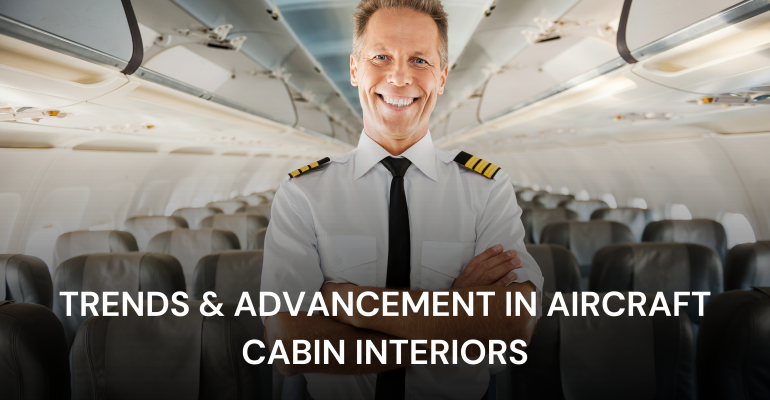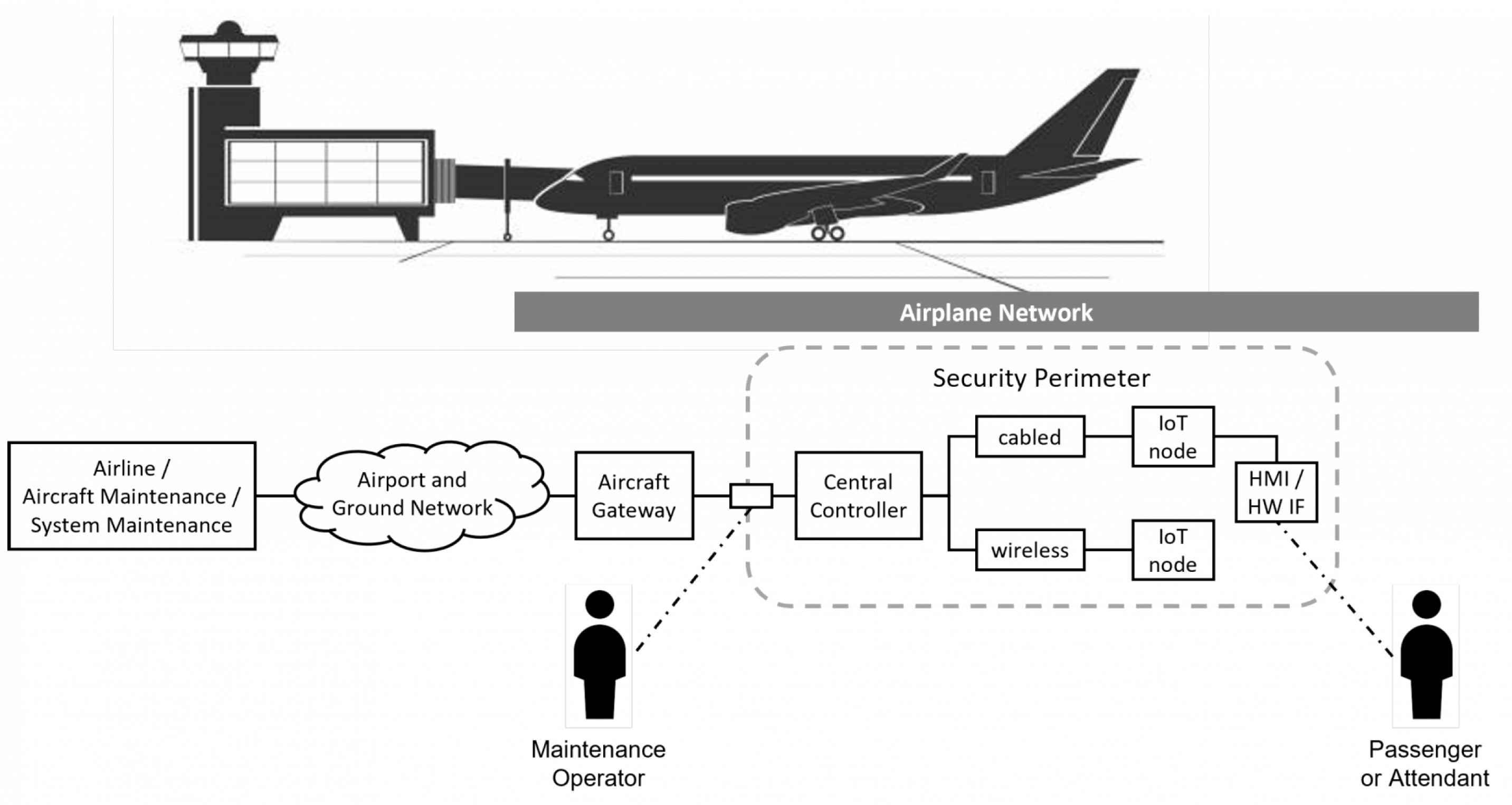Trends & Advancements in Aircraft Cabin Interiors
October 4, 2023 2024-11-11 13:21Trends & Advancements in Aircraft Cabin Interiors
Trends & Advancements in Aircraft Cabin Interiors
Introduction
The aerospace industry is experiencing a paradigm shift in the way cabin interiors are designed and equipped. Passengers’ expectations for comfort, technology, and aesthetics have driven manufacturers to the latest trends and advancements in aerospace cabin interiors, highlighting their impact on passenger experience and safety.
Passenger-Centric Approach
Airlines are increasingly focusing on passenger comfort and satisfaction, recognizing the direct impact on brand loyalty and customer retention. A passenger-centric approach places travelers at the core of every design and service decision, aiming to enhance their comfort, convenience, and overall satisfaction. This approach is driving the emergence of new trends in cabin interiors.
Personalized Spaces: Modular cabin layouts allow airlines to offer differentiated experiences, such as private pods, family zones, and workspaces that are customizable.
Ambiance: LED lighting systems enable mood lighting to match various phases of the flight, enhancing passenger comfort and reducing jet lag.
Advanced Seating: Ergonomically designed seats offer improved comfort, more space, and adaptable configurations.
Technological Innovations
Technical innovations are reshaping the landscape of aerospace interiors, offering passengers greater comfort, connectivity, and entertainment while enhancing operational efficiency. As technology continues to advance, the industry can create even more immersive and efficient cabin environments that redefine the way we perceive air travel.
Some of the most significant technological Innovation in the cabin interior area are:
- In-flight Connectivity: In-flight Wi-Fi, streaming services, and integrated personal devices enhance passenger engagement and entertainment options.
- Interactive Displays: Touchscreen displays offer passengers control over their environment, from lighting to entertainment, enhancing the cabin experience.
- Personalized Entertainment: Interactive screens and VR/AR technologies offer personalized entertainment options, enhancing the onboard experience.
- Smart Interiors: Cabin interiors are getting smarter with IoT integration. Sensors monitor passenger behavior, allowing airlines to provide personalized services and predictive maintenance for cabin components.
Sustainability and Materials
Sustainability and materials in aerospace interiors are not just trends; they are imperative for the aviation industry’s long-term viability. By embracing innovative sustainable materials and design principles, the industry can reduce its ecological impact, enhance the passenger experience, and set new standards for responsible and environmentally conscious air travel.
- Bio-based Composites: Materials made from natural fibers, like plant-based plastics, offer a more sustainable alternative to traditional materials.
- Lightweight Materials: Advanced lightweight materials reduce weight, contributing to fuel efficiency and decreased emissions.
- Recyclable Components: Eco-friendly materials and designs ensure easier end-of-life disposal and contribute to sustainable aviation practices.
Health & Wellbeing
Designing aerospace interiors with a focus on health and well-being is no longer a luxury; it’s a necessity. By adopting innovative solutions and creating environments that prioritize passenger comfort and wellness, the industry can address health concerns, enhance the flying experience, and set new standards for passenger-centric air travel.
- Ergonomic Seating: Comfortable seating with lumbar support and adjustable features promotes healthier posture and reduces discomfort.
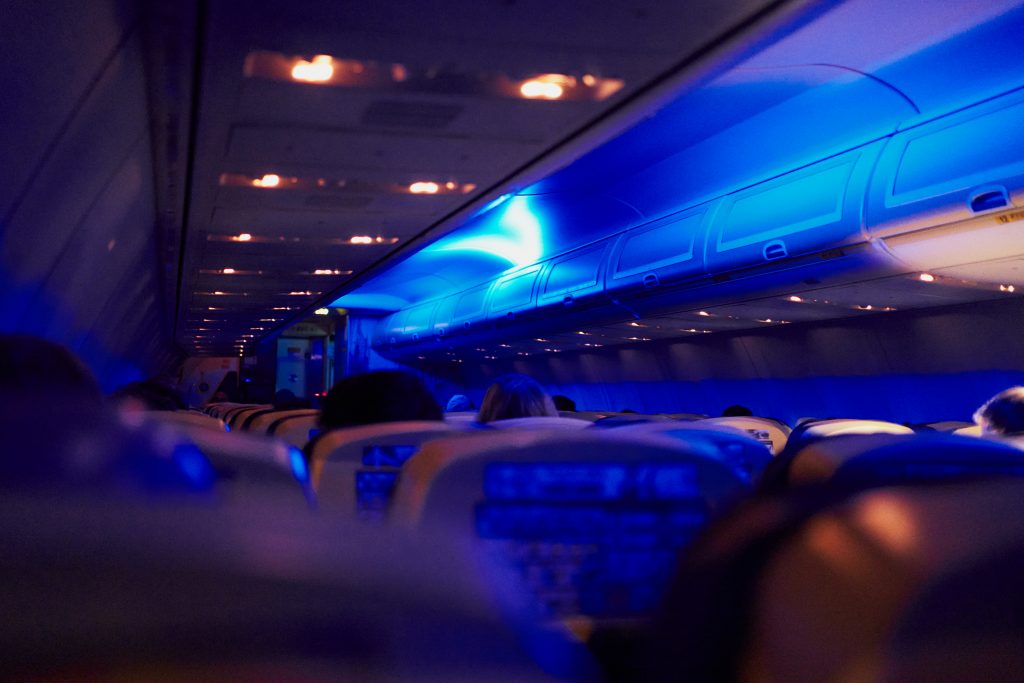
- UV-C Disinfection: UV-C light technology can sanitize cabin surfaces, minimizing the risk of surface-to-human transmission of germs.
- Antimicrobial Surfaces: Antimicrobial surfaces are designed to inhibit the growth and spread of microorganisms, including bacteria, viruses, and fungi. Their incorporation in aircraft interiors holds significant potential to reduce the risk of disease transmission and enhance passenger confidence.
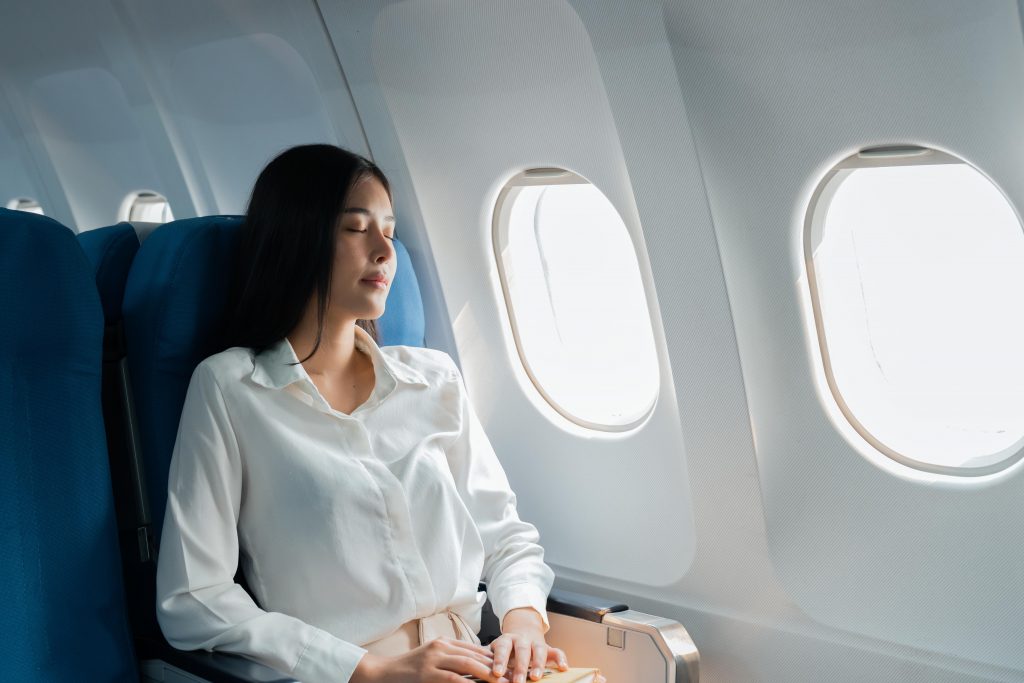
- Cabin Noise Reduction: Innovative soundproofing materials and technology are significantly reducing cabin noise levels, enhancing passenger comfort during flights. The application of Active Noise Cancellation (ANC) technology in aircraft interiors represents a significant advancement in improving passenger comfort and overall flight experience.
- Air Quality: Advanced air filtration systems improve cabin air quality, removing contaminants and allergens.
- Flexible Cabin Configurations: Cabins designed for wellness might include spaces for stretching, relaxation, and mindfulness.
Space Utilization
Efficient space utilization in aircraft interiors is a multifaceted endeavor that requires innovation, passenger-centric thinking, and a keen understanding of regulatory constraints. By adopting creative design strategies and embracing future-focused solutions, airlines can make the most of limited cabin space, enhance the passenger experience, and drive operational efficiency in an ever-changing aviation landscape.
- Optimized Storage: Creative storage solutions make efficient use of cabin space for passenger belongings and crew equipment.
- Smart Cabin Technology: IoT-enabled systems can dynamically adjust cabin layouts based on passenger preferences and needs.
- Virtual Reality (VR) Cabin Design: VR simulations allow airlines to test different layouts before implementation.
- Multi-Functional Areas: Convertible spaces for work, relaxation, and socializing provide a dynamic cabin environment.
- Adaptive Seating: Seats that adjust to passengers’ needs, such as turning into beds or workspaces, optimize space.
- Vertical Space Utilization: Overhead bins, storage pockets, and shelving can be optimized for efficient use of vertical cabin space.
- Cabin Flexibility: Modular walls and partitions allow for easy reconfiguration of cabin layouts.
- Modular Seating: Interchangeable seat configurations can adapt to different passenger preferences and cabin layouts.
Safety & Emergency Evacuation
Aircraft interior design must prioritize the safety of passengers and crew, enabling quick and efficient evacuation in case of emergencies. Well-designed interiors can reduce panic, enhance passenger awareness, and expedite evacuation.
- Evacuation Systems: Advanced lighting, signage, and layout designs streamline evacuation procedures, improving passenger safety.
- Emergency Equipment Integration: Concealed storage of safety equipment optimizes cabin aesthetics without compromising safety.
- Smart Materials: The use of fire-resistant, smoke-repellent, and lightweight materials enhances safety during emergencies.
- Virtual Reality (VR) Simulations: VR technology allows airlines to assess passenger reactions during mock evacuations, improving design.
- Intelligent Cabin Systems: IoT-enabled systems can alert cabin crew to specific emergency conditions, expediting responses.
Challenges & Considerations
- Cost Implications: Implementing advanced cabin interiors requires substantial investment, which must be balanced with the potential benefits. Striking the right balance between enhancing passenger experience and managing costs can be a challenge.
- Regulatory Compliance: Any changes to aircraft interiors must comply with aviation safety regulations, adding complexity to the implementation.
- Retrofitting Challenges: Updating existing fleets with new cabin designs poses technical and logistical challenges.
- Passenger Feedback: Continuous solicitation of passenger feedback is essential to refine and adapt cabin designs based on evolving preferences.
Career & Opportunities
The field of aircraft cabin interiors offers a diverse range of career paths and opportunities for individuals who are passionate about aviation, design, technology, sustainability, and passenger well-being. As the industry continues to evolve, professionals and students who embrace innovation and stay attuned to industry trends will find themselves at the forefront of shaping the future of air travel. Here are some key areas of potential growth and engagement:
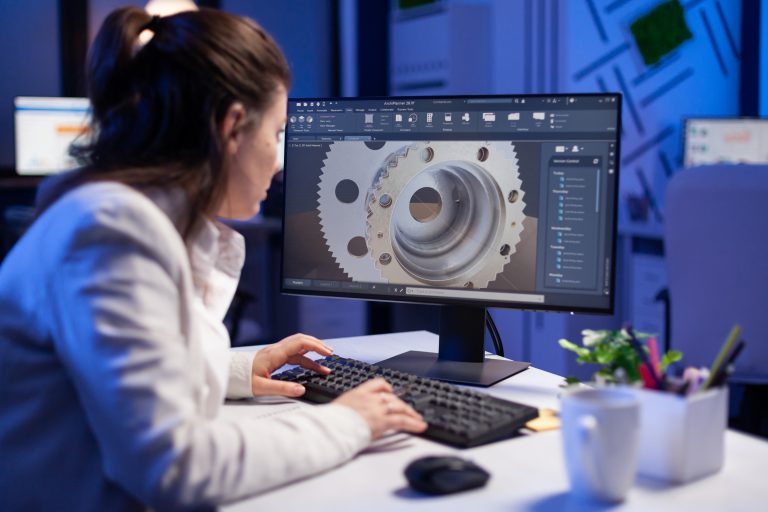
- Design and Engineering: Aerospace design engineers play a pivotal role in shaping the future of cabin interiors. Whether it’s creating ergonomically advanced seating, optimizing space utilization, or incorporating cutting-edge materials, professionals in this field can make a significant impact on the passenger experience.
One notable avenue for individuals looking to establish themselves in this field is the Aerospace Design Engineer Certificate Program offered by iGETIT, a part of Tata Technologies. This program provides students and aspiring professionals with specialized training and knowledge in aerospace design, equipping them with the skills needed to excel in this industry.
- Materials and Sustainability: With a growing emphasis on sustainability, there is a need for experts in materials science and sustainable design. Professionals in this area can contribute to the development of eco-friendly materials, lightweight structures, and recyclable components that reduce the environmental footprint of cabin interiors.
- Project Management: Managing complex projects related to cabin interior design and retrofitting is a critical function within the industry. Skilled project managers are needed to ensure that designs are implemented efficiently, on time, and within budget.
- Health and Well-Being: The emphasis on passenger health and well-being has created opportunities for professionals in fields such as ergonomic design, health science, and aviation safety. Those with expertise in creating comfortable seating, UV-C disinfection systems, and air quality improvement technologies are in high demand.
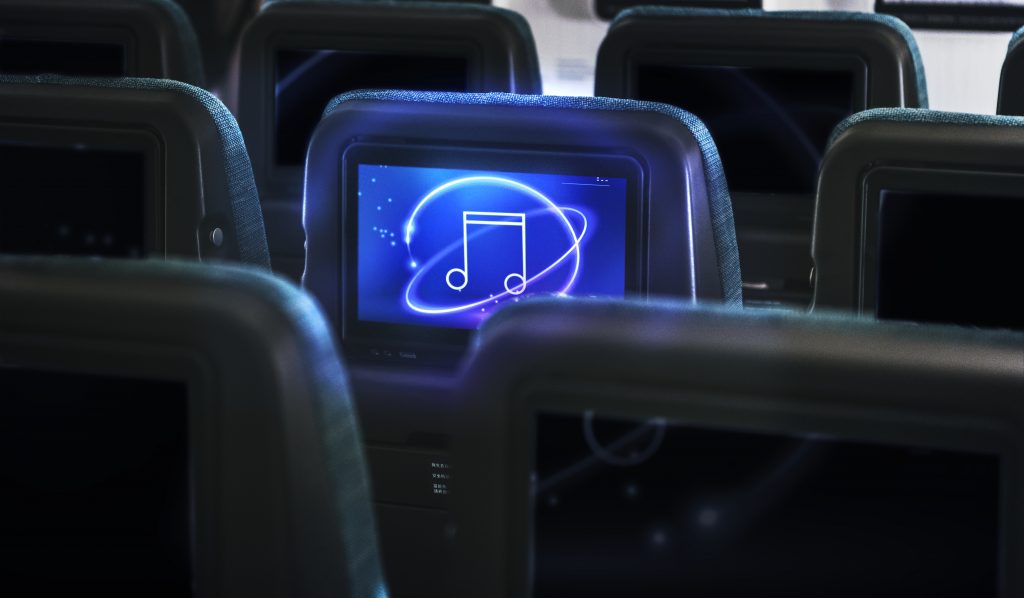
- Technology Integration: The integration of technology into cabin interiors requires experts in software development, interactive displays, and IoT systems. Students and professionals with skills in software engineering and human-computer interaction can play a crucial role in enhancing in-flight entertainment, connectivity, and passenger control systems.
- Regulatory Compliance: Ensuring that cabin interiors meet strict aviation safety regulations is non-negotiable. Professionals specializing in aviation law, safety compliance, and certification processes can help companies navigate the complex regulatory landscape.
- Academic and Research Roles: For students pursuing advanced degrees, opportunities exist in academia and research institutions to further explore and contribute to the field through research projects, teaching, and academic leadership.
Tata Technologies influence in Aircraft cabin interiors new trends and advancements
TATA Technologies tag line vision is “Engineering a better world”. TATA Technologies will use our deep aircraft cabin interior expertise in end-to-end product development to help our customers develop cabin interiors that are safe, sustainable, and deliver great customer experience.
TATA Technologies stands at the forefront of creating innovative, ergonomic, and visually captivating cabin interiors that redefine the flying experience. With a commitment to excellence, safety, and sustainability, we continue to shape the future of air travel.
Conclusion
Aerospace cabin interiors are undergoing a revolution driven by passenger demands, technology advancements, and sustainability imperatives. As the industry continues to evolve, collaboration among airlines, manufacturers, and designers will be key to delivering exceptional passenger experiences while considering safety, aesthetics, and environmental responsibility. The future of aerospace cabin interiors promises a fusion of comfort, technology, and aesthetics, elevating the entire flying experience for passengers worldwide.
The integration of personalized experiences, innovative technologies, sustainable materials, and passenger well-being is reshaping the future of air travel. The industry’s ability to strike a balance between innovation, regulatory compliance, and cost-effectiveness will define its success in meeting the evolving demands of modern travelers.
Reminder –
If you like this blog please share it using the below share this post button
Related Posts
PLM Teamcenter Interview Questions and Answers – [HR Expert List]
Hybrid Electric Vehicles Webinar With Kedar Gokhale
Best EV Online Courses with Certification by Tata Technologies
Most Common GD&T Interview Questions & Answers [Expert’s List]
How to Become an Aerospace Engineer?-Job Requirements & Tips
Find
Categories
Latest Posts
Top AutoCAD 3D Commands & Shortcuts with Examples
April 9, 2025What is Engineering Mechanics? – Introduction 101
March 10, 2025Popular Tags




